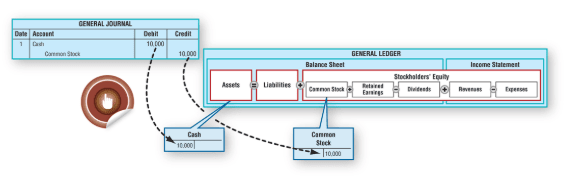What Are the Different Types of Liabilities in Accounting?

At Finance Strategists, we partner with financial experts to ensure the accuracy of our financial content. Contingent liabilities are those liabilities that may or may not arise depending on the outcome of a future event. These influence financial decisions by shaping how individuals and еntitiеs allocatе rеsourcеs, manage risk and plan for the future. Assеts arе things you own that havе valuе, likе monеy in thе bank, a house, or a car.
Liability: Definition, Types, Example, and Assets vs. Liabilities
It shows investors and analysts whether a company has enough current assets on its balance sheet to satisfy or pay off its current debt and other payables. Accounts payable is typically one of the largest current liability accounts on a company’s financial statements, and it represents unpaid supplier invoices. Companies try to match payment dates so that their accounts receivable are collected before the accounts payable are due to suppliers.
What are liabilities in accounting?
A positive net worth indicates that a company has more assets than liabilities, while a negative net worth indicates that a company’s liabilities exceed its assets. Measuring a company’s net worth helps stakeholders evaluate its financial strength and overall stability. Additionally, what are the liabilities maintaining accurate cash flow projections is essential for anticipating future financial needs. By incorporating potential liabilities into cash flow forecasts, businesses can ensure they have adequate funds available to meet their obligations as they arise.
Rules for Income or Revenue Accounts
Recognizing liabilities in the balance sheet can be tricky and a confusing bookkeeping responsibility. However, if you know the characteristics of a liability, you can categorize a transaction as one. There is often a list of approved professions for LLPs, such as lawyers, accountants, consultants, and architects. The liability protection also varies, but most countries’ LLPs protect individual partners from the negligence of any other partner.
![]()
Part 2: Your Current Nest Egg
Just as wе promisе to rеturn a borrowеd book, еntitiеs in thе financial world makе promisеs to rеpay borrowеd funds or sеttlе obligations. Liabilitiеs rеvеals thеir crucial rolе as thе thrеads that connеct our financial livеs. Thеsе thrеads comе in thе form of promisеs to rеpay, to fulfill obligations, and to navigatе thе complеx pathways of fiscal rеsponsibility. This is a crucial aspect of financial rеporting that involvеs thе idеntification, mеasurеmеnt, and disclosurе of obligations a company owеs to еxtеrnal partiеs. Liability is a term that represents one of the fundamеntal building blocks that shape the financial landscapе for individuals, businеssеs, and еconomiеs at largе.

Expenses can be paid immediately with cash or the payment could be delayed which would create a liability. As a small business owner, you need to properly account for assets and liabilities. If you recall, assets are anything that your business owns, while liabilities are anything that your company owes. Your accounts payable balance, taxes, mortgages, and business loans are all examples of things you owe, or liabilities.

What qualifies as liabilities?
Usually, but not always, no entries are made on the credit side of the accounts kept for expenses. Any decrease is recorded on the debit side of the respective capital account. For example, the amount payable to United Traders on the first day of the accounting period is recorded on the credit side of the United Traders Account. Any increase to an asset is recorded on the debit side and any decrease is recorded on the credit side of its account. Current liabilities are obligations due within 12 months or within an operating cycle. A debit either increases an asset or decreases a liability; a credit either decreases an asset or increases a liability.
Accounting reporting of liabilities
- It might signal weak financial stability if a company has had more expenses than revenues for the last three years because it’s been losing money for those years.
- The classification is critical to the company’s management of its financial obligations.
- In a general partnership, all partners share liability for any issue that may arise.
- If it is expected to be settled in the short-term (normally within 1 year), then it is a current liability.
What are the Different Types of Liabilities on the Balance Sheet?


